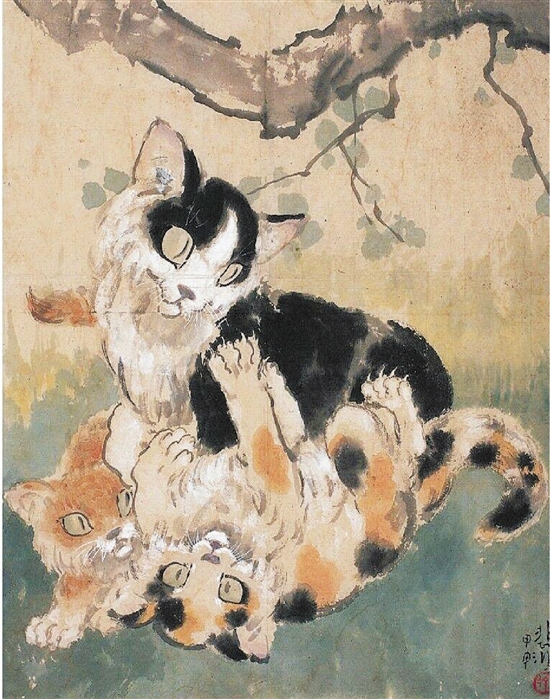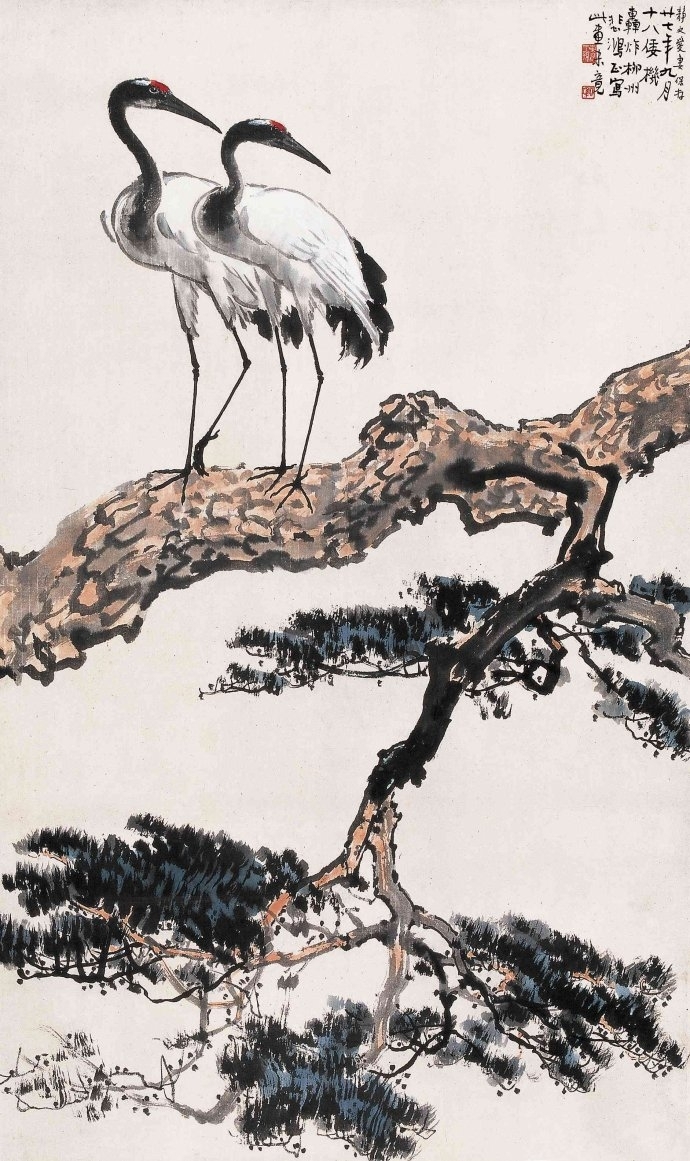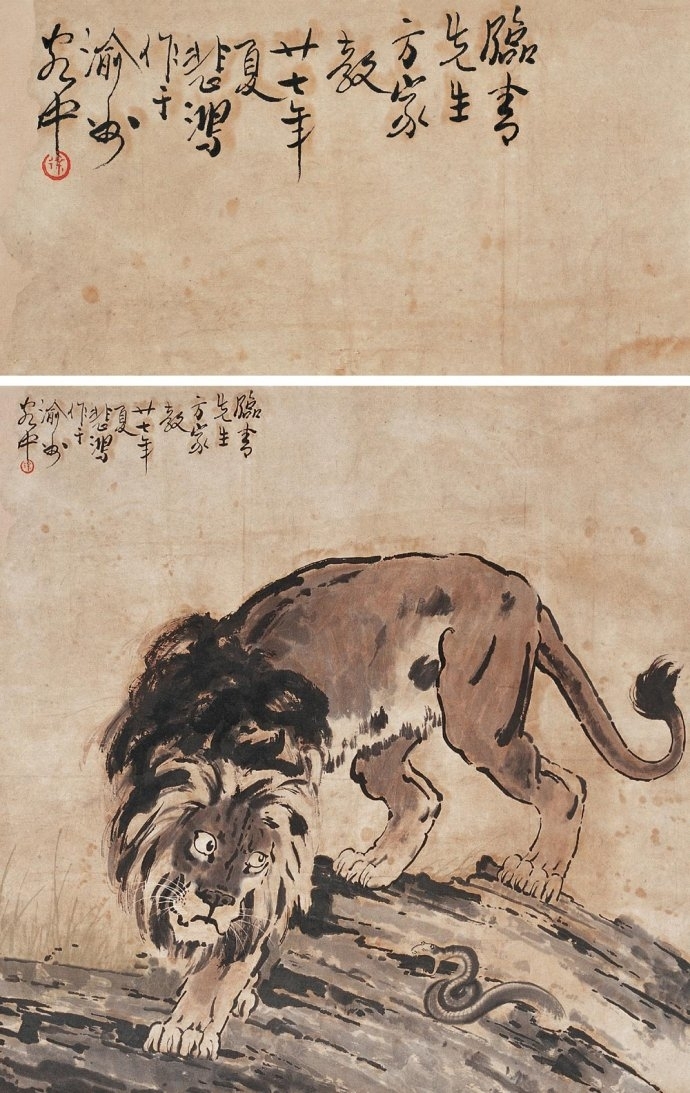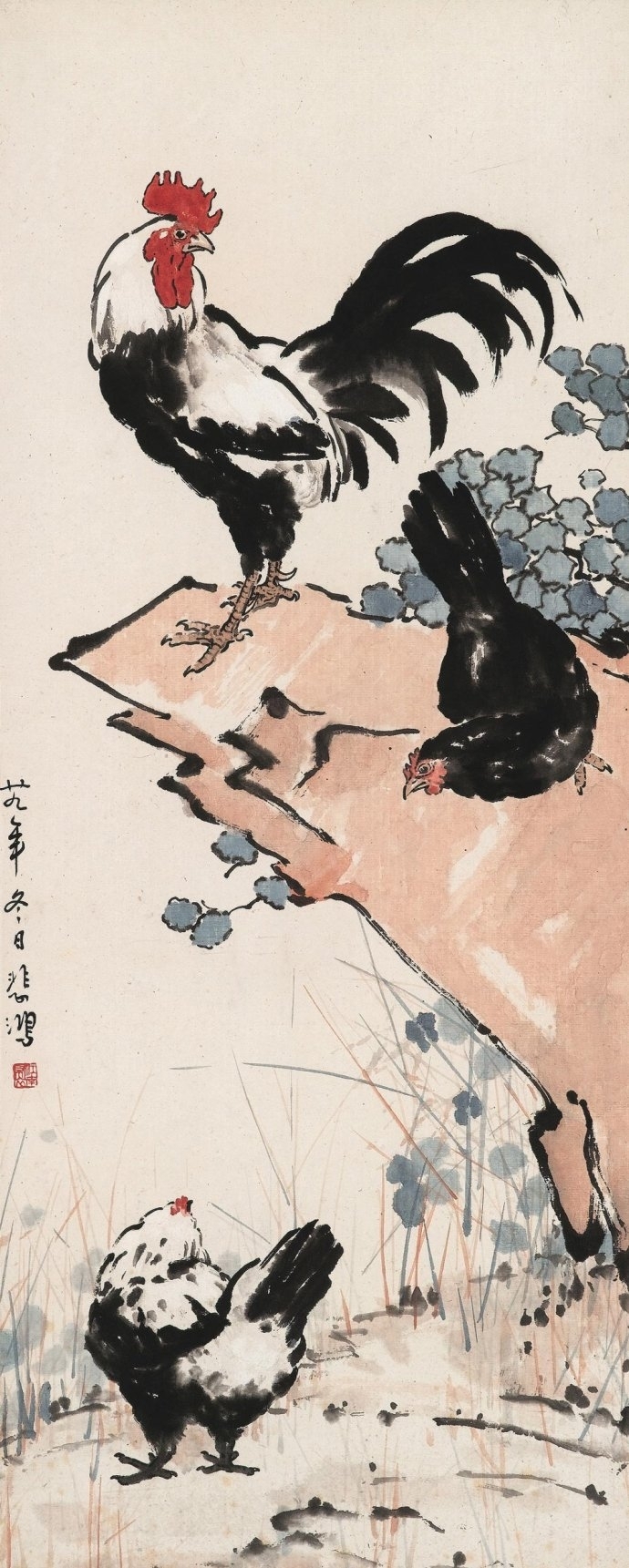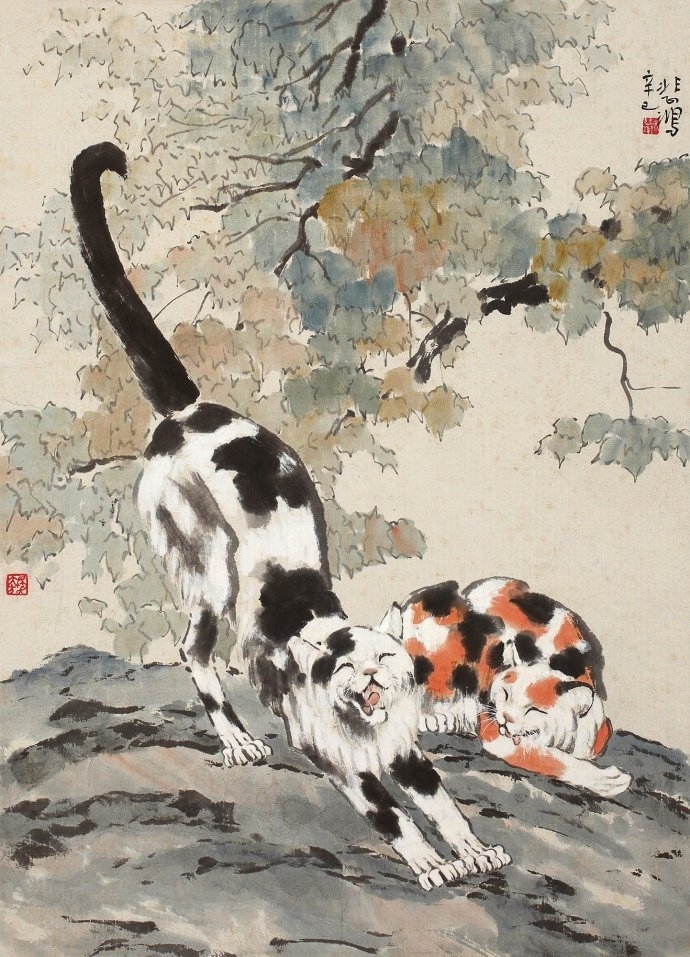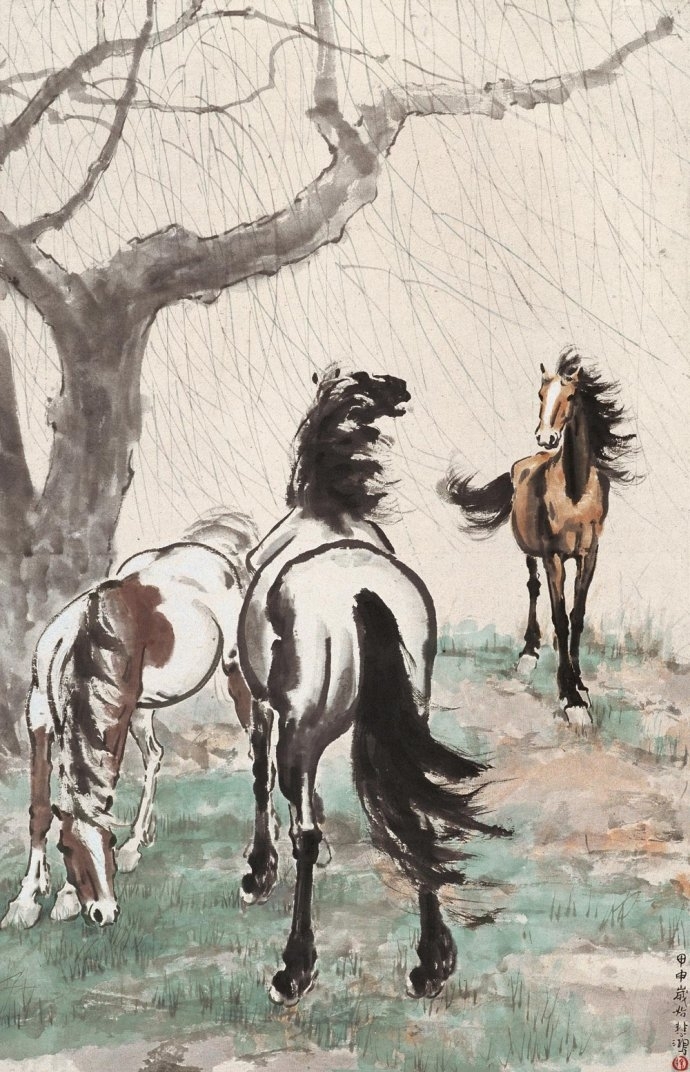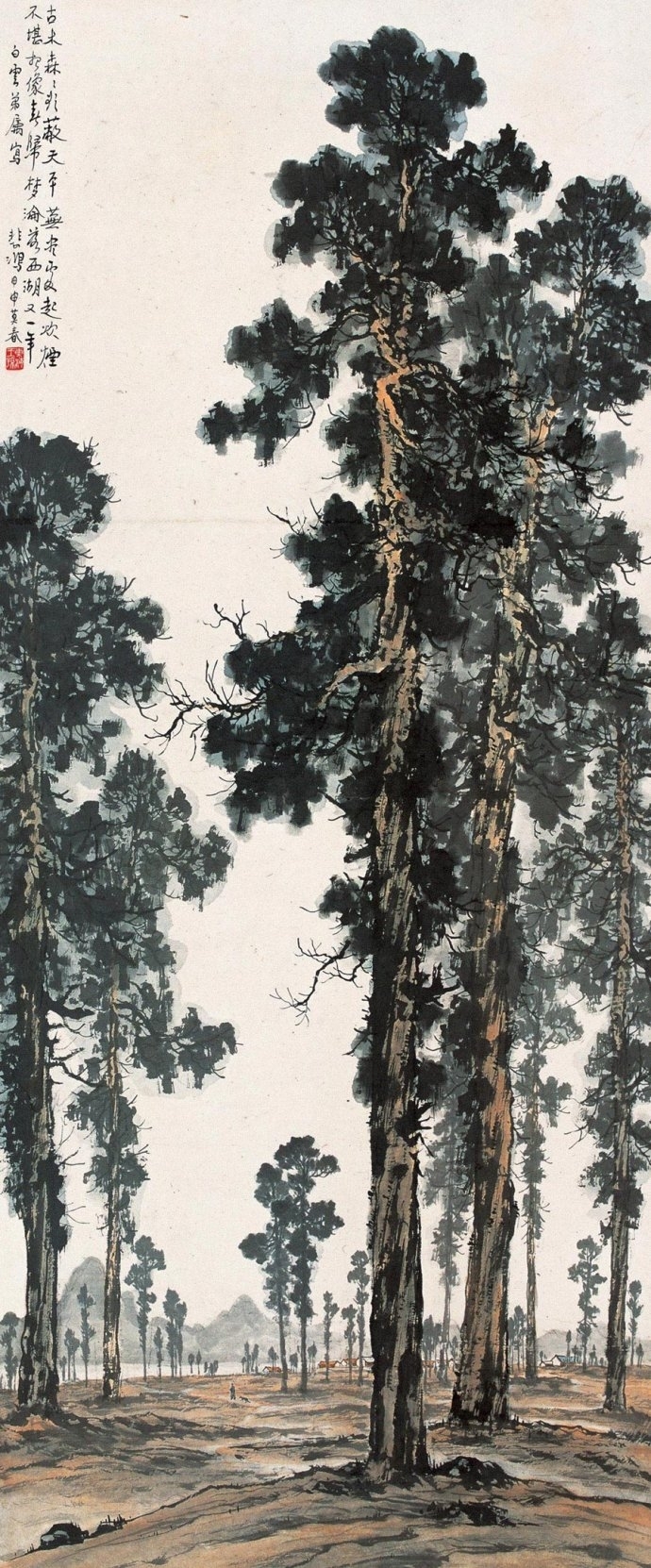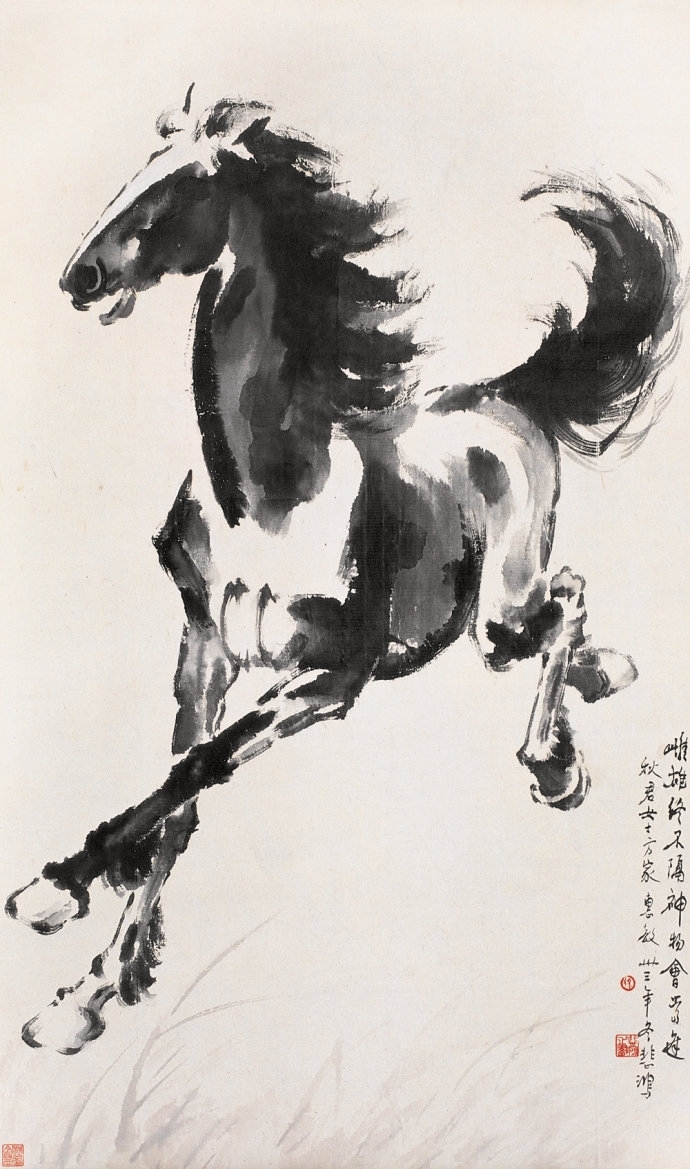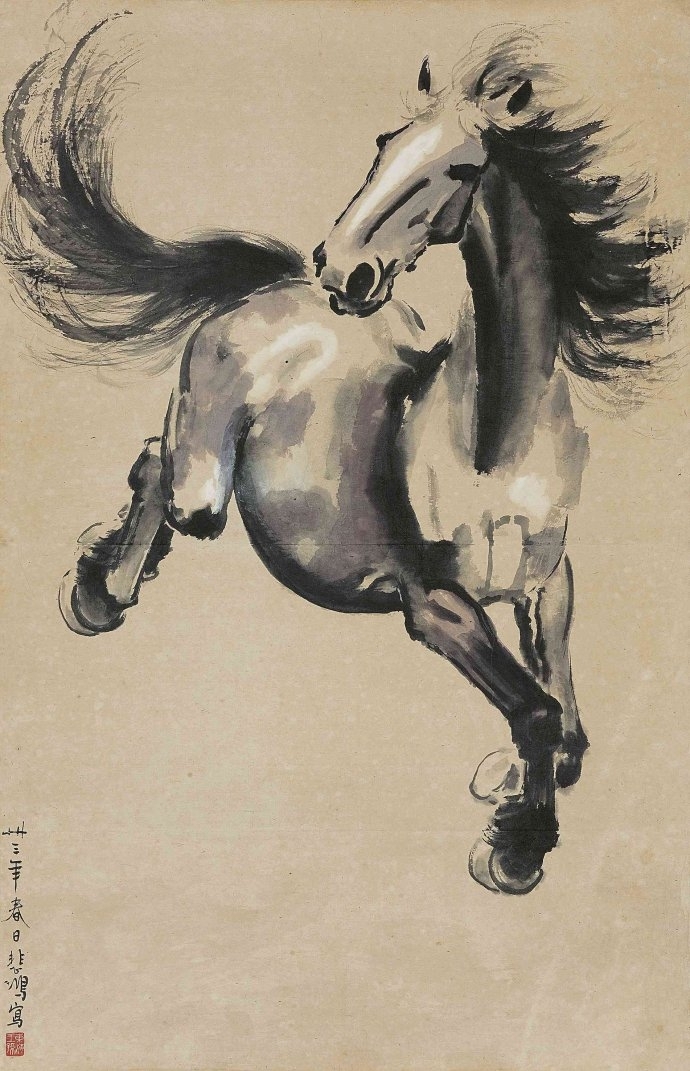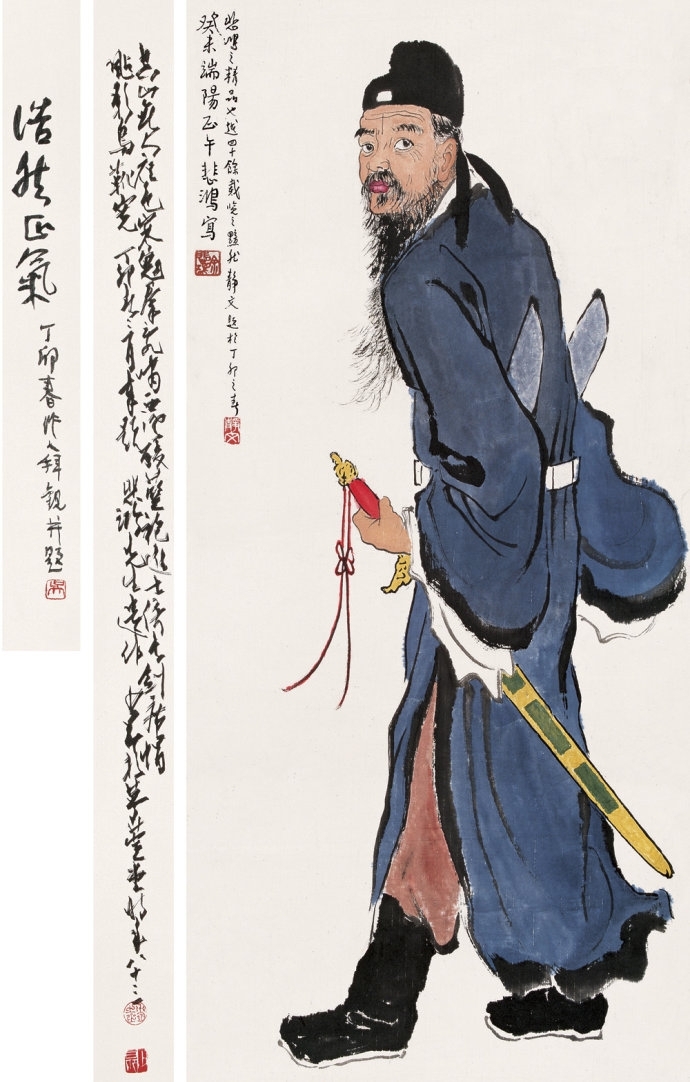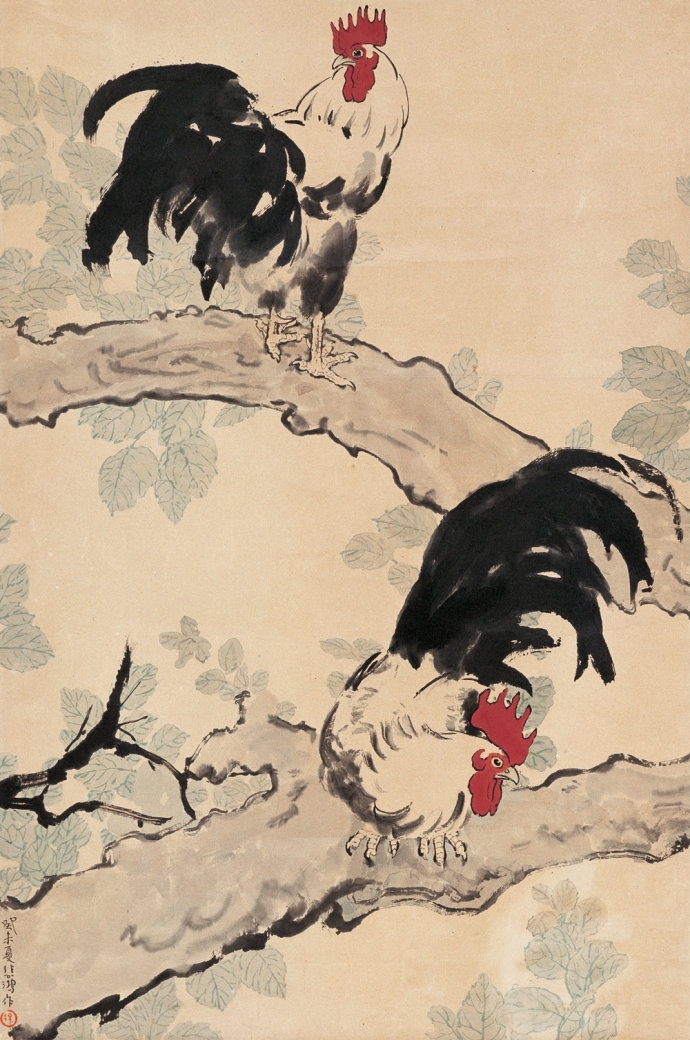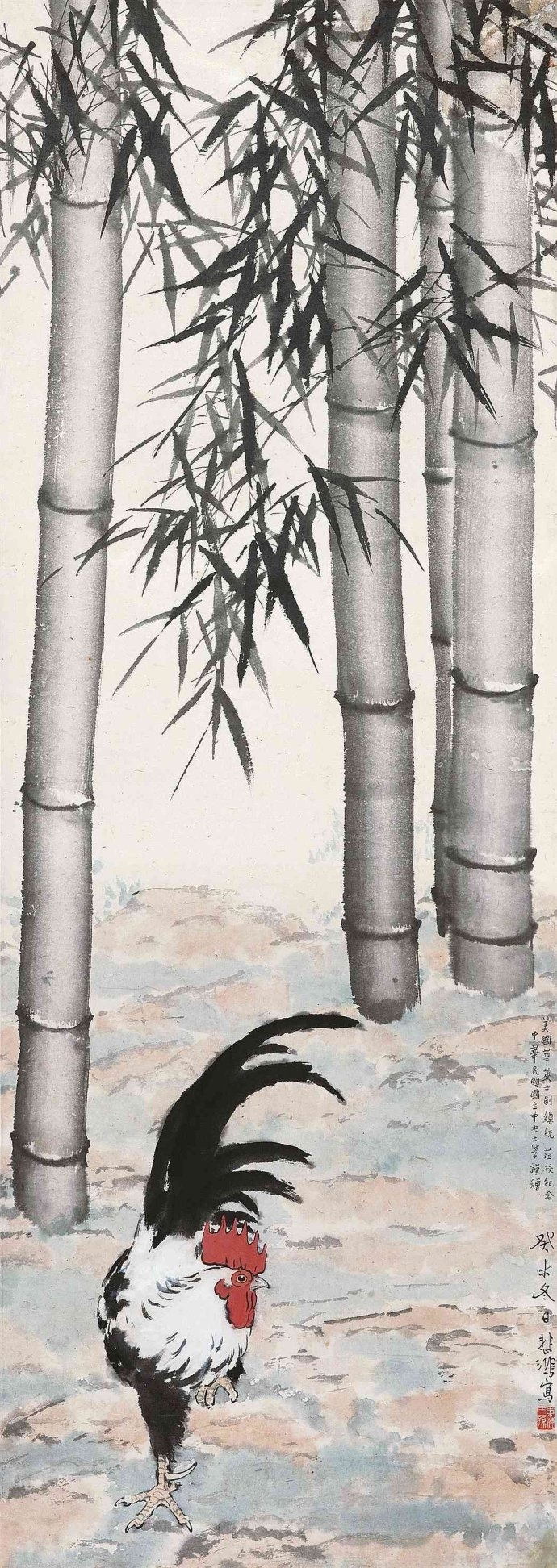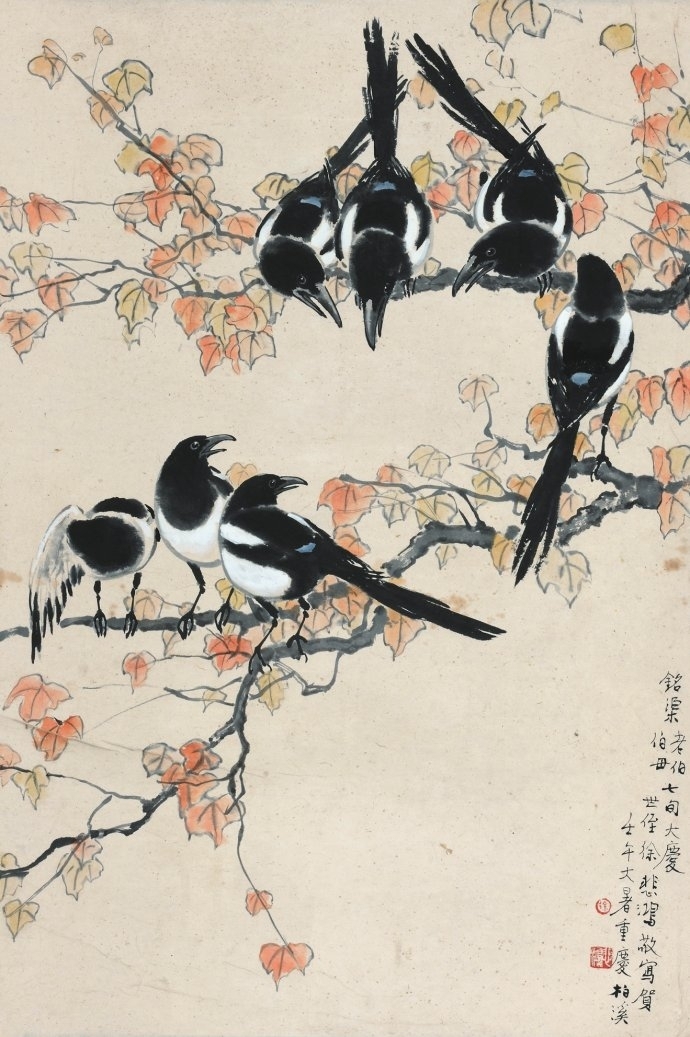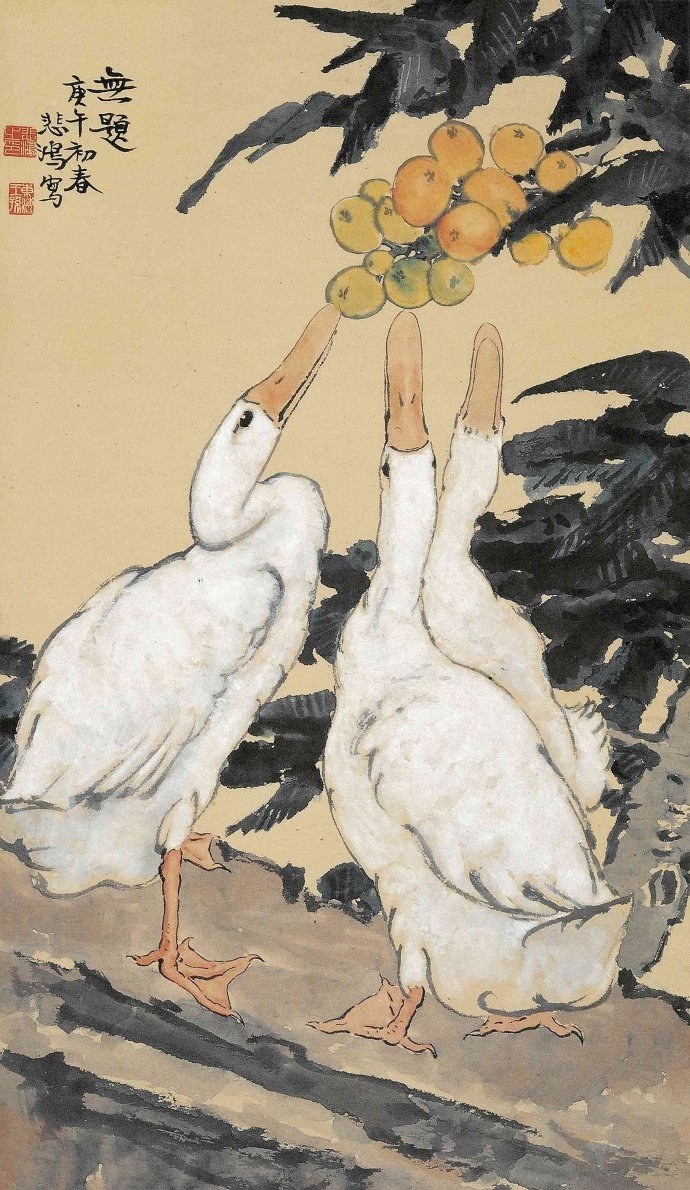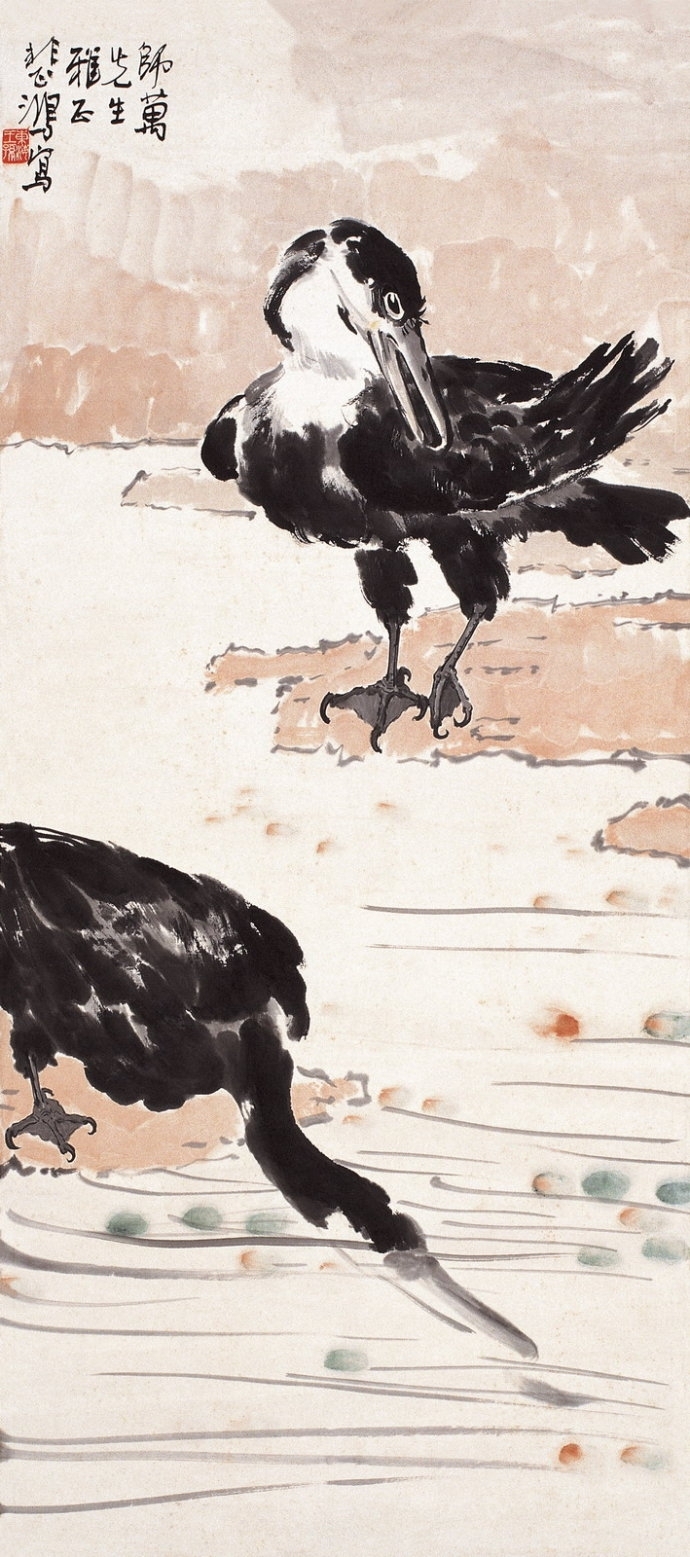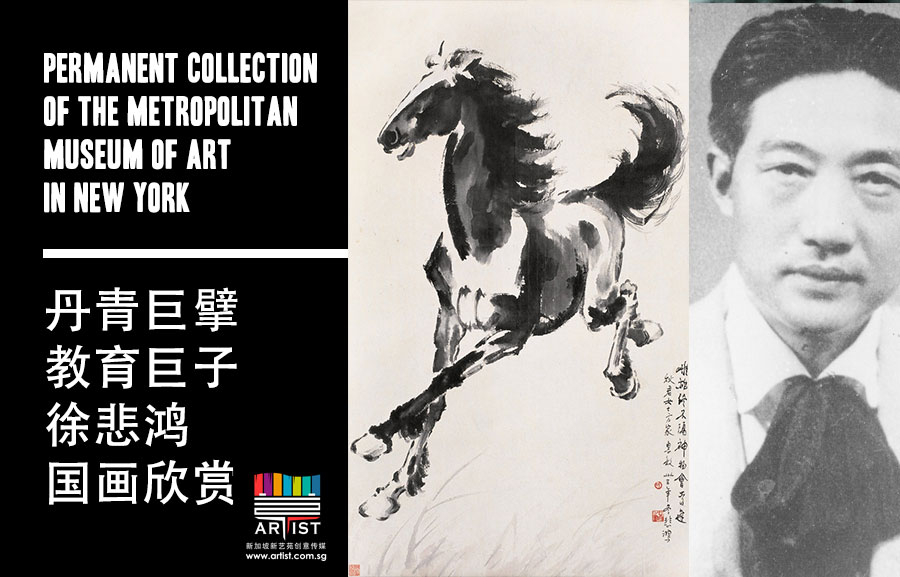Xu Beihong was a Chinese painter best known for his traditional ink paintings of horses, birds, and landscapes. With a masterful command of his medium, the artist was able to achieve a sense of movement in just a few brushstrokes.
Along with his more traditional ink washes, Xu also created large-scale oil paintings in a European academic style that depicted classic Chinese scenes and portraits. Born on July 19, 1895 in Yixing, China, Xu began to study ink painting when he was just six years old, and went on to study the École National Supérieure des Beaux-Arts in Paris as a young man. The artist exhibited throughout Europe during his life, though he was an extreme opponent of the Modernist work he saw at the time.
After the founding of the People’s Republic of China in 1949, Xu became president of the Central Academy of Fine Arts and chairman of the China Artists Association. Xu Beihong was a master of both oils and Chinese ink. Most of his works, however, were in the Chinese traditional style. In his efforts to create a new form of national art, he combined Chinese brush and ink techniques with Western perspective and methods of composition. He integrated firm and bold brush strokes with the precise delineation of form. As an art teacher, he advocated the subordination of technique to artistic conception and emphasizes the importance of the artist’s experiences in life. Of all of the Painters of the modern era, it can be safely said that Xu is the one painter most responsible for the direction taken in the modern Chinese Art world
Today, Xu’s works are in the permanent collection of the Metropolitan Museum of Art in New York, and the Xu Beihong Memorial Museum was established at his house after his death on September 26, 1953 in Beijing, China.
